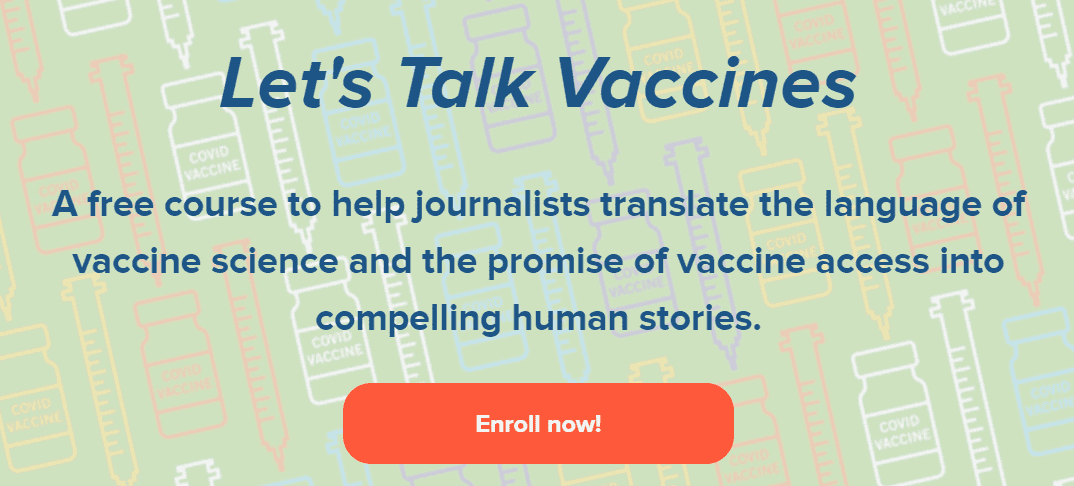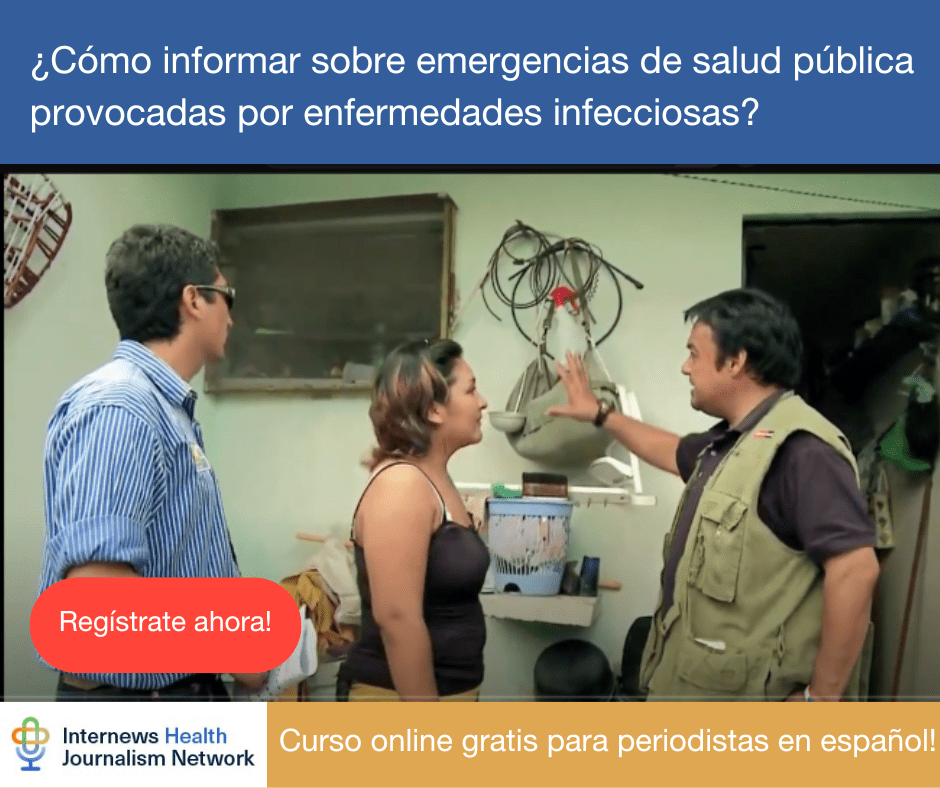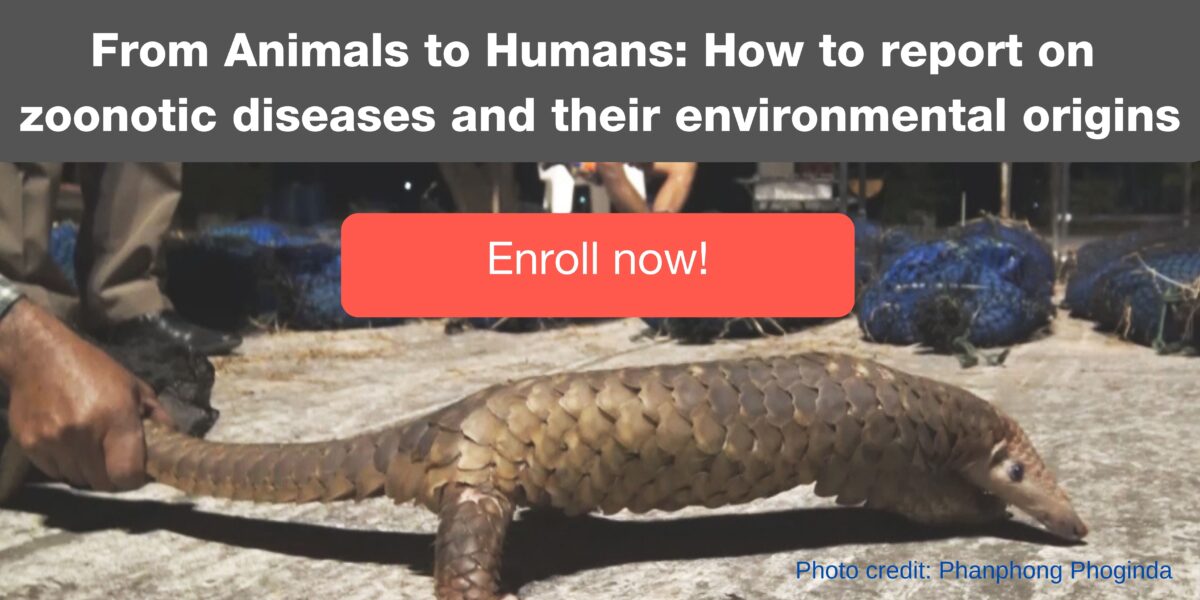These courses have been developed specifically for journalists covering the global COVID-19 pandemic by our team of Health Media Mentors. We encourage all members of the Health Journalism Network to take these free online courses and be better equipped to cover the biggest health story of our times.
To help journalists worldwide navigate vaccine science and manage misinformation, Internews created a comprehensive online course, Let’s Talk Vaccines—first in English, now available in French, and in Arabic and soon in Spanish, Portuguese, Serbian, Croatian, Hindi and possibly, Kiswahili.
Let’s Talk Vaccines is an interactive e-learning course in 5 parts which takes journalists through key components of the vaccine story: first vaccine science and development, then vaccine access, and the logistics of rollout. There’s also a module on vaccine uptake, which looks at what journalists can do to address the myths and misperceptions that lead to vaccine hesitancy. A final module guides journalists through the resources and sources to trust and use as they continue to follow this story.

This course enables communicators, journalists, radio broadcasters, citizen reporters to acquire knowledge about infectious diseases affecting countries, communities and territories in the Latin American and Caribbean region. The course is entirely in the Spanish language and can be accessed through the Internews Studio platform. Click visual below to learn more about this course.

The Let’s Talk COVID-19 focuses specifically on the SARS-CoV2 virus. It covers the nature of viruses, zoonoses, and the origin of COVID-19; the nature of SARS-CoV2 and its variants; the transmission and prevention of SARS-Cov2; how COVID-19 is diagnosed and treated; the impact of the COVID-19 pandemic; and how COVID-19 numbers are counted and why. It is a comprehensive course that offers a foundation for covering the current pandemic.

Developed by Internews Earth Journalism Network in April 2021, this self-paced e-learning course – From Animals to Humans: How to report on zoonotic diseases and their environmental origins – aims to strengthen journalists’ understanding in zoonotic diseases, their environmental origins and the various efforts to prevent the spillover of pathogens from animals to humans. The course is designed at an introductory level and consists of four main modules: 1) Introduction to Epidemiology; 2) Introduction to Zoonotic Diseases; 3) Preventing, Monitoring and Reacting to Viruses with Pandemic Potential; and 4) Wildlife and Zoonoses. To complement this course, a tutorial – Using Data to Investigate Zoonotic Diseases – provides tips on using available data sets to report on the environmental drivers of zoonotic diseases and includes a data recipe that walks learners through a step-by-step guide on how to produce a data-intensive story that investigates deforestation, which is one of the major factors contributing to the spillover of viruses.
